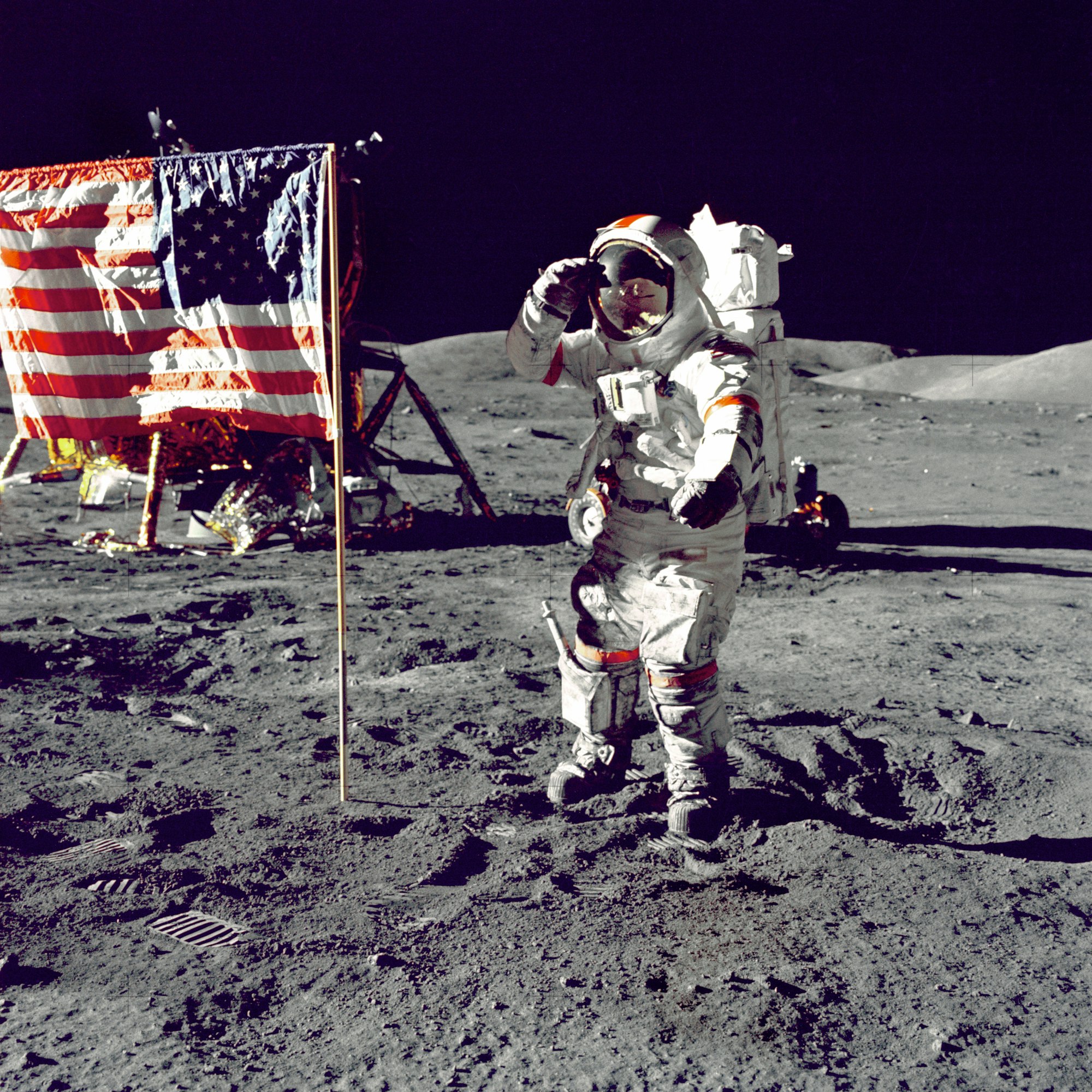Powerful Manifesto To Inspire You To Write Yours
Develop a clear and concise message to articulate your vision to the world through your Manifesto. JFK, McLaren F1, Carl Segan, Marin Luther King Jr, Declaration of Independence, Charles Darwin, Buckminster Fuller & So on...

What is a Manifesto?
A manifesto is a statement of purpose, a call to action, an inspiration, and a guideline. It's short, sweet and to the point. It's written to convey the message of change and progresses toward a future state.
How & Why to Write a Manifesto
A concise message with the fluidity of a speech shows clarity of vision. Aim to keep your manifesto to 1-2 paragraphs maximum so you can quickly and professionally articulate what you're going to accomplish.
- Listen to Carl Segan's speech below to hear the manifesto of an astronomer.
- Read a dozen other manifestos from an auto designer to the Olympics.
The Space Exploration Manifesto, written by Carl Segan
Example: Carl Sagan's "Pale Blue Dot" manifesto is a reflective passage from his 1994 book, where he contemplatively describes the Earth's place in the universe, as seen from the Voyager 1 sent out into space to discover the universe. It was inspired by a photograph of Earth as a small pale dot amidst the vastness of space. The passage encourages humility and responsibility in our relationship with mother earth and all its inhabitants and is considered a powerful call for humanity to take ownership of Earth and understand our role in the larger universe.
5 Steps to Writing A Manifesto
Step 1: Define the Vision
Start by defining the goals and objectives of what you want to achieve. Tip: Chunk the idea down into key pillars so you can be specific on what to achieve. Defining metrics can help you achieve the qualitative result you looking for.
Tip 1: Remember that those with a vision are on a mission, and the ones with a mission have a message. Adopt this approach and you are not looking to make money to buy things, you are focused on creating products and services that deliver meaning. You'll find so much more fulfillment working on a cause, so define it.
Step 2: Research & Capture The Essense
Gather information from a variety of sources, articles, and biographies, buy samples, demo products, and read other manifestos. When Don Murray created the McLaren F1 he was inspired by Honda's engineering and design of the Acura NSX, the doors of the Toyota Sera and many other parts from other vehicles.
Give yourself permission to be a synchronic philosopher. Meaning use the wisdom you've garnered from past experiences and research then add your unique twist and element to it.
Tip: Identify the limits around what you want to create. Perhaps it doesn't even exist.
When Henry Ford decided to build a V-8 engine, he wanted the eight cylinders cast in one block, and instructed his engineers to produce it. The engineers stated it was impossible to cast an eight-cylinder engine-block in one piece.
Ford replied,''Produce it anyway." (Remeber tip 1)
Step 3: Write & Don't Overthink It
Put pen to paper and use simple and clear language, so the manifesto is easy to understand.
Tip: You hear me say this often, "What gets measured, gets mastered." So let's use the example of Don Murray who clearly stated a 0-60 time of under 3 seconds in his manifesto. He only achieved 3.2 seconds, but it's meant to be a guide toward mastery, not perfection.
Step 4: Get Feedback
Share it with the people who can think and play at that level. Gordon Murray got feedback from BMW M engine expert Paul Rosche who ended up building the McLarens F1 Engine.
Tip: Sometimes the answers you seek are from sounding boards outside your normal domain. I make living by asking quality questions.
The psychologist Carl Jung and the Quantum Physicist Wolfgang Pauli discussed synchronicity and dream interpretation. They discussed he commonality of the mind and the universe. They published a joint volume, The Interpretation of Nature and the Psyche.
Be open, but don't lose sight of vision. Just remember there is a fine line between genius and crazy. Like my wife says, you need both. So use feedback to improve your manifesto.
Step 5 Read, Refine and Print
Make sure it's clear and concise. Then print, because if it's something you love it will drive you crazy. Reading it will remind you that you are on a mission, a journey and it's not just about the destination.
List of Manifesto
Covering sports, business and politics these manifestos represent a wide set of views. Some failed because of extreme ideologies, and that's what makes them worth studying.
The "Man on the Moon" manifesto, "Moon Speech" written by John F. Kennedy
This speech is widely considered a turning point in American history. Given by President John F. Kennedy on September 12, 1962, at Rice University in Houston, Texas. Kennedy announced the goal of sending a man to the moon and safely returning him back to earth before the end of the decade, arguing that it would not only be a great scientific and technical achievement, but also a demonstration of American leadership and determination. He emphasized the importance of investing in science and technology, and the role of government in supporting and funding ambitious projects. He also highlighted the benefits of space exploration for national security, economic growth, and international relations.
McLaren F1 Manifesto by Auto Designer Don Murray
The manifesto for the McLaren F1 was to create the ultimate driving machine, a car that combined high performance and advanced technology with exceptional design and craftsmanship. The goal was to build a car that could achieve a top speed of over 240 mph and a 0-60 time of under 3 seconds, while also being comfortable and easy to drive. The car was built around a carbon fibre monocoque chassis and featured a naturally aspirated 6.1-litre V12 engine, advanced aerodynamics, and cutting-edge suspension and braking systems.

The Manifesto of the United States: The Declaration of Independence written by Thomas Jefferson
The founding document of the United States outlines the beliefs and goals of the American colonies in their fight for independence from British rule. The Declaration states that all men are created equal and have the inalienable rights of life, liberty, and the pursuit of happiness, and that government exists to protect these rights. It also lists the grievances against the British king and declares that the colonies are, and of right ought to be free and independent states. It serves as the foundation of the United States, it set the principles of freedom, democracy and self-government that guide the country's political system and society.
The Lean Startup Manifesto, written by Eric Ries
A call to action for entrepreneurs to embrace a more efficient and effective approach to product development, and to prioritize learning and adaptation over planning and prediction. It emphasizes rapid experimentation and learning in order to validate business ideas and the need for continuous adaptation and iteration in order to achieve success. The belief is that traditional "big launch" product development methods are risky and inefficient, and instead advocate for a "build-measure-learn" feedback loop, where startups continuously release minimal viable products and gather customer feedback to inform future development. It stresses the importance of focusing on the needs of the customer and using data-driven decision-making to guide the development process.
The Manifesto for the Civil Rights movement in America, I have a Dream by Martin Luther King Jr
Martin Luther King Jr.'s "I Have a Dream" speech, delivered in 1963, is considered a manifesto for civil rights, equality and freedom. He calls for an end to racism and discrimination against African Americans and for the United States to live up to its ideals of freedom and equality. He uses powerful language and references to the Declaration of Independence, the Emancipation Proclamation, and the US Constitution to appeal to the moral conscience of the nation and to call for action to change the status quo. The speech is widely considered one of the most important speeches of the 20th century and is remembered for its powerful and emotive language and its call to action for civil rights.
The Olympic Games Manifesto
The goal was to promote physical education, sports and culture, and to promote peace and mutual understanding among the nations and their peoples. It has been revised over the years, but there are 6 original principles:
- The Olympic Ideal defines the spirit and the values of Olympism.
- The Olympic Movement defines the structure and organization
- The Olympic Games, the organization, regulation, and conduct
- The Olympic Athletes, which defines the rights and responsibilities of athletes.
- The Olympic Education defines the role of education
- The Olympic Symbol defines the Olympic flag and the Olympic anthem.
The Olympic Charter has been updated and revised over the years, but the original principles and values outlined in 1894 still form the foundation of the Olympic Movement today.
The Manifesto on the Origin of Species, Written by Charles Darwin
The book presents the theory of evolution by natural selection, which explains how species change over time through natural selection. Darwin's theory proposed that the characteristics of organisms that are advantageous for survival and reproduction are passed on to the next generation, leading to the gradual adaptation of species to their environment. He backed up his theory with various pieces of evidence and examples from his observations and research. The book also challenged the prevailing religious and scientific beliefs of the time and had a significant impact on the scientific community and the general public, fundamentally changing the way we understand the natural world and the diversity of life on Earth.
The Manifesto for Solving Earths Problems, written by Buckminster Fuller
Bucky presents his ideas about the design and management of the Earth as a living system and calls for a comprehensive and holistic approach to solving the world's problems. He emphasizes the importance of understanding the interdependence of all living things and the need for cooperation and collaboration among nations and individuals to ensure the survival and prosperity of humanity. He also advocates for the use of science and technology to improve the human condition and the use of design as a tool for problem-solving. He argues that by viewing the earth as a single organism, we can create a sustainable and equitable society. He calls for a shift in the way we think about the world, from the perspective of limited resources and scarcity to one of abundance and potential.
The Natzi Party Manifesto, The Mein Kampf written by Adolf Hitler
A combination of Hitler's personal history and his ideology his Manifesto outlines his beliefs in the concept of racial purity, the extermination of Jews and other groups deemed inferior, the need for Lebensraum (living space) for the German people and the expansion of the German empire. Hitler also outlined his belief in the need for a strong centralized government, led by a single leader, and the suppression of political opposition. It's considered a hateful and racist document as it promotes ideas of racial purity and the inferiority of certain groups, which later became the basis of the Holocaust.
The Communist Manifesto, written by Karl Marx & Fridrich Engels
One of the most famous and influential manifestos in history calls for the workers of the world to unite and form a Communist Party to lead the revolution and establish a society around the community. It calls for the overthrow of capitalism and the establishment of a classless, where the means of production are owned and controlled by the community. Their belief was that the concentration of wealth and power in the hands of a small ruling class leads to the exploitation of the working class.

